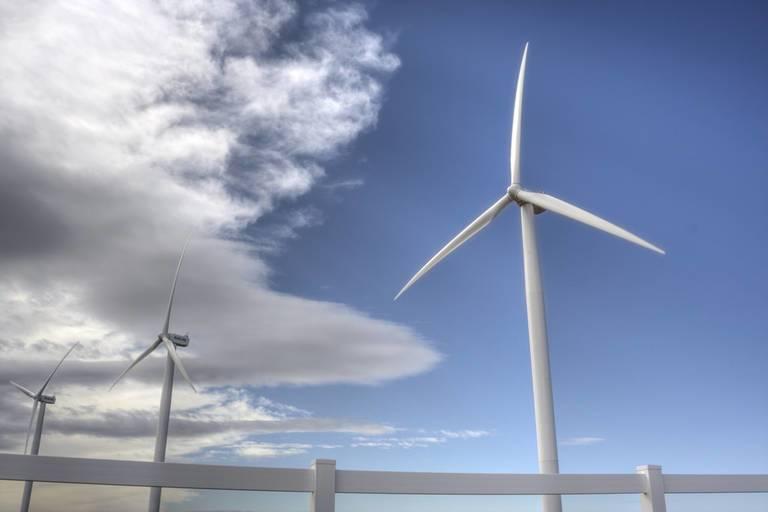
This week, the North Dakota Senate is mulling a bill that would impose a two-year moratorium on wind power development. State Sen. Dwight Cook said the bill is necessary to “save coal,” as quoted in the Bismarck Tribune newspaper.
State senators amended Bill 2314 in order to allow North Dakota’s energy regulator, the Public Service Commission (PSC), to approve any new application for wind power projects if “additional generation is needed for consumers in the state.” But opponents, including state Sen. Erin Oban, still oppose the bill as they insist it creates a “moratorium without calling it a moratorium.”
Any calls to resuscitate coal in this northern prairie state of 740,000 ignores the fact that coal already powers the majority of its residents and businesses. According to the latest figures published by the U.S. Energy Information Agency (EIA), 75 percent of the state’s net electricity generation came from coal-fired power plants in 2014. The state is also rich in hydrocarbons.
The fossil fuel boom, due to drilling and hydraulic fracturing across the state’s Bakken formation, helped North Dakota rise to become the second largest oil-producing state in the U.S. The bubble drove a surge in construction -- and, to some observers, crime -- before low oil prices recently slowed growth.
Meanwhile, North Dakota’s PSC continued to allow wind power installations to launch across the state. One local university estimated that over 1,000 wind turbines generate about 1.8 gigawatts of clean energy across the state, with future projects eventually boosting that total to 2.7 GW over the next few years. That power, which supplies 17.5 percent of the state’s electricity, is enough to keep the lights on in 510,000 American homes.
The American Wind Energy Association claims that this sector also lends and economic lift to North Dakota, with 2016 capital investment of $4.2 billion. As much as $10 million of that figure went to locals for land lease payments, creating up to 5,000 direct and indirect jobs across the state.
North Dakota is now ranked 11th amongst U.S. states for both utility-scale wind power generation and installed capacity – and it's sixth in the nation in total potential wind power capacity.
The declining cost of wind energy offers opportunities for North Dakotans to save more money on their monthly utility bills, especially those whose home or office systems use electricity for heating instead of natural gas. North Dakota’s electricity costs per-kilowatt are low compared to most U.S. states, but its long winters contribute to the state having the third-highest energy consumption per-capita in the country.
Nevertheless, proponents of Senate Bill 2314 complain that wind power and other renewables have an unfair advantage over other sources of power because it is subsidized by the federal government. Critics in North Dakota reply that wind installations are a financial boon to rural communities, and historically federal subsidies have long favored the development of fossil fuel reserves.
In any event, any attempts to revive the U.S. coal industry ignore the fact that, despite an uptick in coal production projected for the next two years, the sector will still face a net decrease in total jobs. Furthermore, the head of the Utility Shareholders of North America told the Bismark Tribune that since utilities operate regionally, not solely within a state, any moratorium will hardly eliminate competition – instead, wind farms will simply be built in a neighboring state and North Dakota will lose out on the jobs.
Image credit: Crishna/Flickr

Leon Kaye has written for 3p since 2010 and become executive editor in 2018. His previous work includes writing for the Guardian as well as other online and print publications. In addition, he's worked in sales executive roles within technology and financial research companies, as well as for a public relations firm, for which he consulted with one of the globe’s leading sustainability initiatives. Currently living in Central California, he’s traveled to 70-plus countries and has lived and worked in South Korea, the United Arab Emirates and Uruguay.
Leon’s an alum of Fresno State, the University of Maryland, Baltimore County and the University of Southern California's Marshall Business School. He enjoys traveling abroad as well as exploring California’s Central Coast and the Sierra Nevadas.














